Chris Smith
Elementary envy tops the bill this week with a substance that was christened to compete with europium. It was announced to the world via the slightly unorthodox route of a kids' radio show, but this stuff is none the less worth its weight in gold, in fact its worth more than that, 60 times as much in fact, because its gone on to save thousands of lives and homes around the world since. And to tell us how here's Brian Clegg
Brian Clegg
Keeping up with the neighbours is rarely a concern in the periodic table. nitrogen doesn't care much what carbon and oxygen are up to, and rarely casts covetous glances at phosphorous. But there's at least one substance in the periodic table that was named in response to a nearby element, and that's americium, the element that looks as if it should be pronounced [AMER-ICK-IUM].
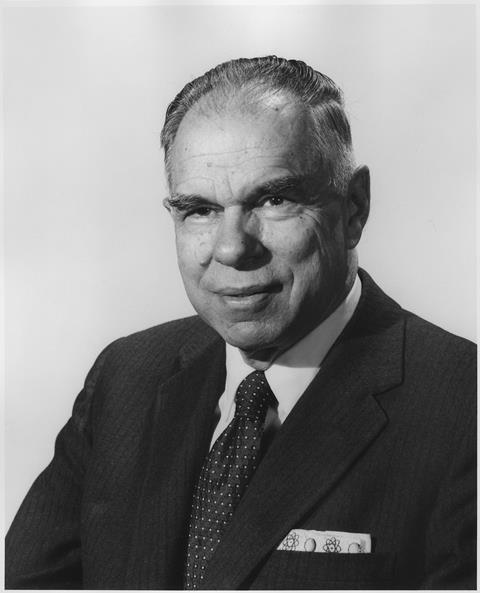
It sits in the seventh position in the actinides, those mostly artificial substances that inhabit the second of the periodic table's floating bars of elements, and directly above it, in the parallel list of lanthanides, you will find europium. Americium's name, according to its discoverers, is 'suggested on the basis of its position. analogous to europium' - but let's face it, you could equally blame its name on continent envy. However it was dreamed up, it's an improvement on the provisional names given to americium and curium (discovered at the same time) – originally they were pandemonium and delirium.
Americium didn't exist until Glen T. Seaborg and his colleagues, working on the Manhattan Project in the Metallurgical Laboratory at the University of Chicago, produced it in 1944. It feels strange to say that Seaborg took out a patent on this 'element 95'. Seaborg's team would isolate a total of 10 new elements, re-arranging the structure of the periodic table.
The first hint the world had of the existence of americium came not in a paper for a distinguished journal, but on a children's radio quiz in 1945. Seaborg appeared as a guest on NBC's Quiz Kids show, where one of the participants asked him if they had produced any other new elements as well as plutonium and neptunium. As Seaborg was due to formally announce the discovery of americium five days later, he let slip its existence, along with element 96, later called curium.
The first isotope of americium produced was americium 241, still the most commonly used form. The Manhattan Project was busy creating plutonium to be used in nuclear weapons, and some plutonium 239 went through a process of capturing extra neutrons to become 240 and then 241, which gave off an electron from the nucleus to turn into americium.
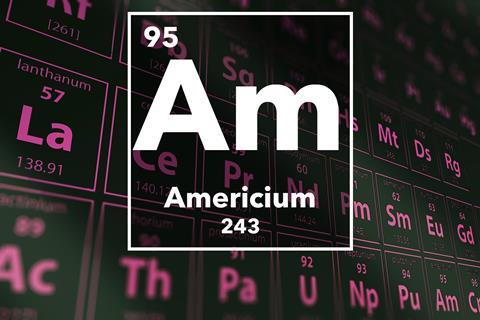
None of americium's isotopes are truly stable - the longest lasting, americium-243, has a half-life of 7370 years, while many of the 18 isotopes produced only hang around for minutes. Like many of the actinides, Americium is silver-white in appearance, and reasonably heavy with a density similar to that of lead. It's a solid at room temperature - you'd need to heat it to over 1,000 degrees Celsius to melt it.
But americium has one unique quality. It's the only artificial element – and the only radioisotope – that is routinely found in the home.
Actually, I ought to qualify that. We all have traces of natural radioactive elements in our houses. If you live somewhere like Cornwall with a high preponderance of granite, you will have more than your fair share, for instance, of radon about the place, giving a background radiation level of three times that experienced in London. But americium is the only radioisotope you are likely to go down to the supermarket and buy - what's more, you will have been encouraged to do so by the government.

That's because americium is used in many smoke detectors. A tiny quantity – less than a millionth of a gram – of americium 241 oxide will be sitting in there, beaming out radiation as it slowly transforms to neptunium with a half life of 432 years. The alpha particles flowing from the americium (it's a better alpha source than radium) pass through a small compartment where they ionize the air, allowing a tiny electrical current to cross the chamber. If smoke particles get in there, they absorb the alpha particles before they can create ions, stopping the current flowing and setting off the alarm.
Every now and then someone will panic when they discover that not only is there a radioactive material in household smoke detectors, but it could, in principle, be used to produce a nuclear weapon. Assemble enough of that americium-241 and it would go critical. But before any terrorist groups try to corner the market in smoke detectors it's worth pointing out that it would take around 180 billion of them to have sufficient americium-241 assembled to go critical – and even then it wouldn't be enough to put the detectors together in the same place, you would have to painstakingly extract each of those 180 billion specks of the element and mould them together, an effort that would take thousands of years.
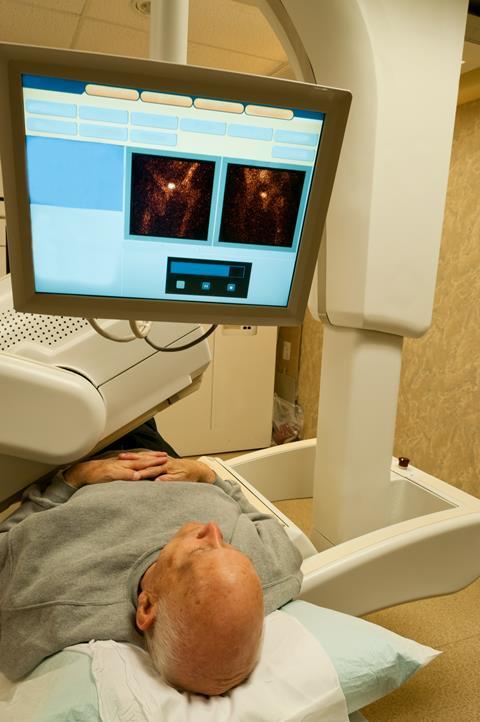
Americium has also found other uses for its radioactive emissions, as a source of both alpha particles and gamma rays for medical applications and in industry – but its use is limited to jobs where only a small quantity is required, as it is expensive to produce. The americium oxide used in smoke detectors costs around $1500 per gram – compare this with the current gold price of around $30 per gram. There's a nice irony that the element named after the world's richest, most consumption-oriented nation is only typically used in very small quantities.
One of my favourite books in my youth was Isaac Asimov's Foundation. In this book, tiny, walnut sized atomic generators are commonplace. This was one of science fiction's dreams that never came true – and many people would now be horrified at the thought of personal use of nuclear power. Yet this one element, americium, is the radioactive heart that helps keep our homes safe.
Chris Smith
Brian Clegg with the element that was born out of envy, but I'm not sure if its compounds are green though. But next week's element certainly is, the discoverer named thallium after the Greek word thallos, meaning "green shoot". But don't get distracted by its colour, because this stuff is deadly, sufficiently nasty in fact for Agatha Christie to have written a murder mystery about it.
Henry Nicholls
I slammed back the receiver, then took it off again. I dialled the number and was lucky enough this time to get Lejeune straight away. "Listen" I said, "is Ginger's hair coming out by the roots in handfuls?" "Well as a matter of fact I believe it is. High fever I suppose." "Fever my foot" I said "what Ginger's suffering from, what they've all suffered from is Thallium poisoning, please God may we be in time."
Chris Smith
And you can hear how Ginger gets on from Henry Nicholls on next week's Chemistry in its Element, do try and join us. I'm Chris Smith, thank you for listening and goodbye.






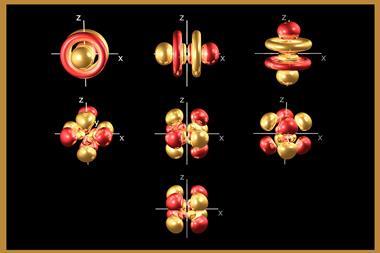
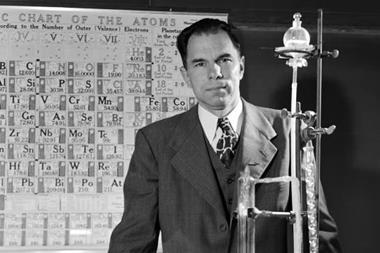





No comments yet